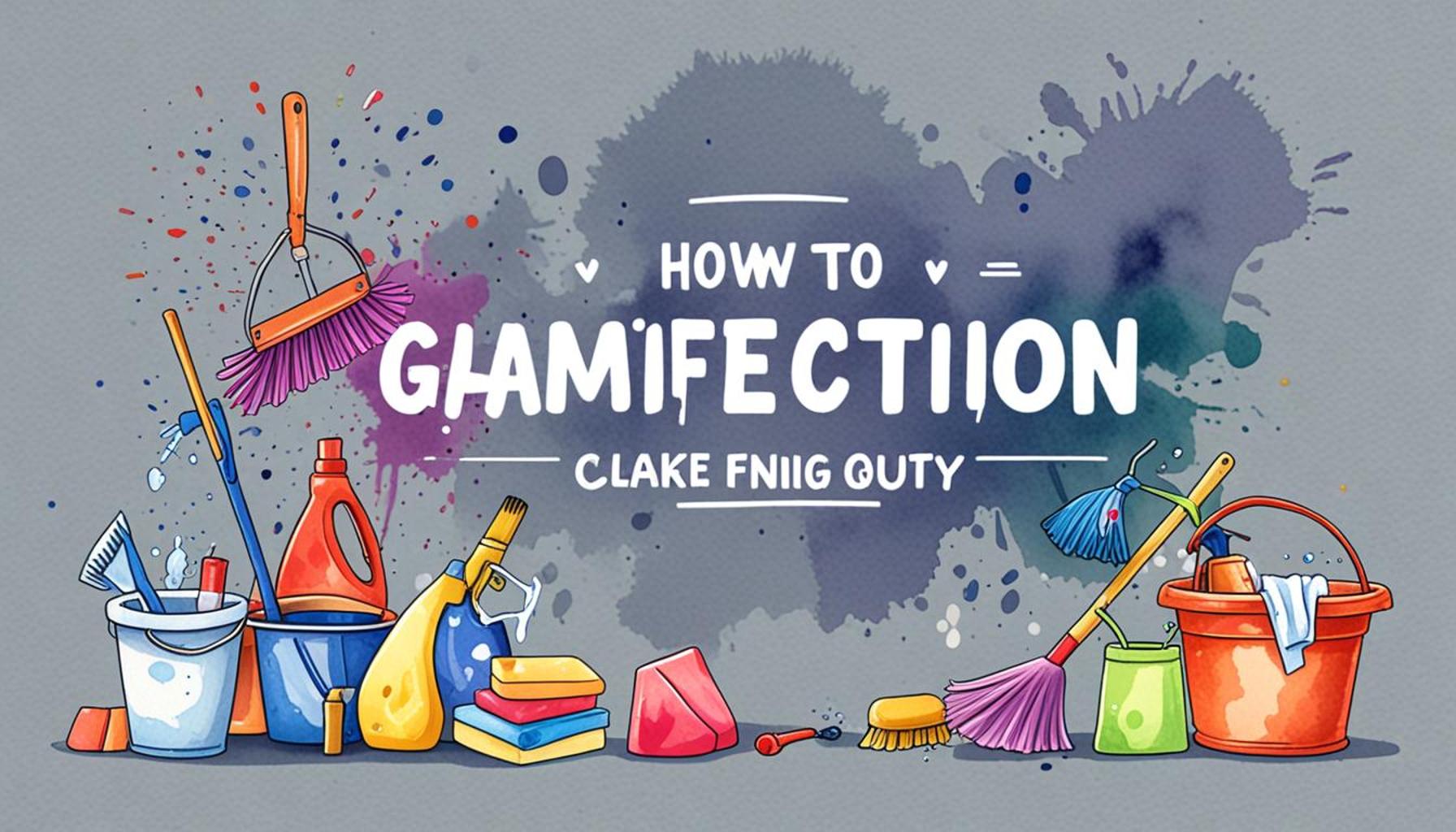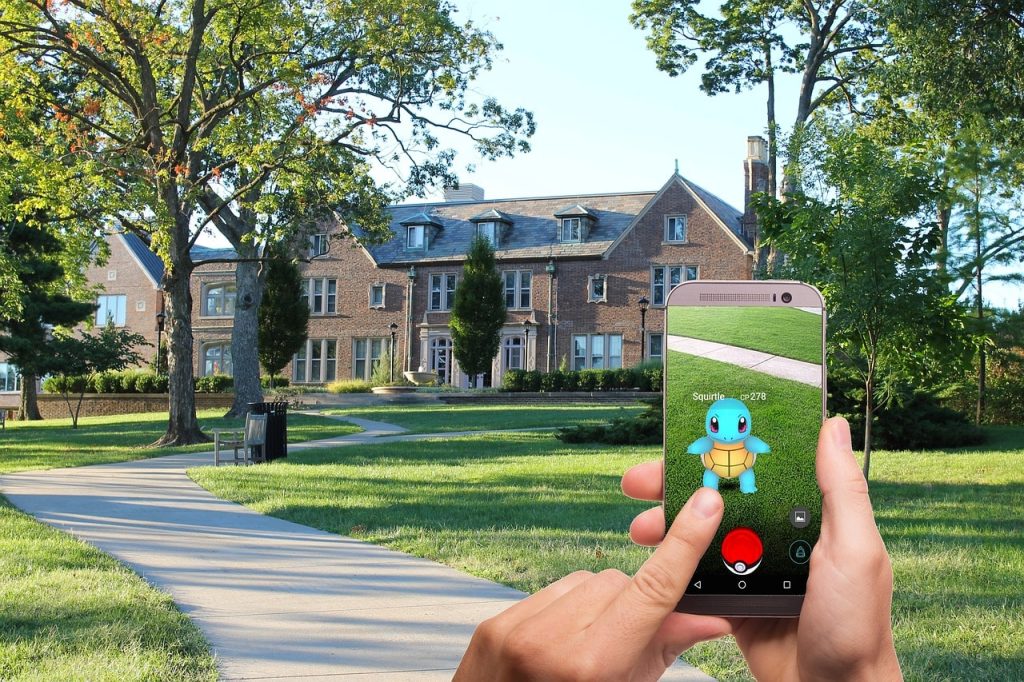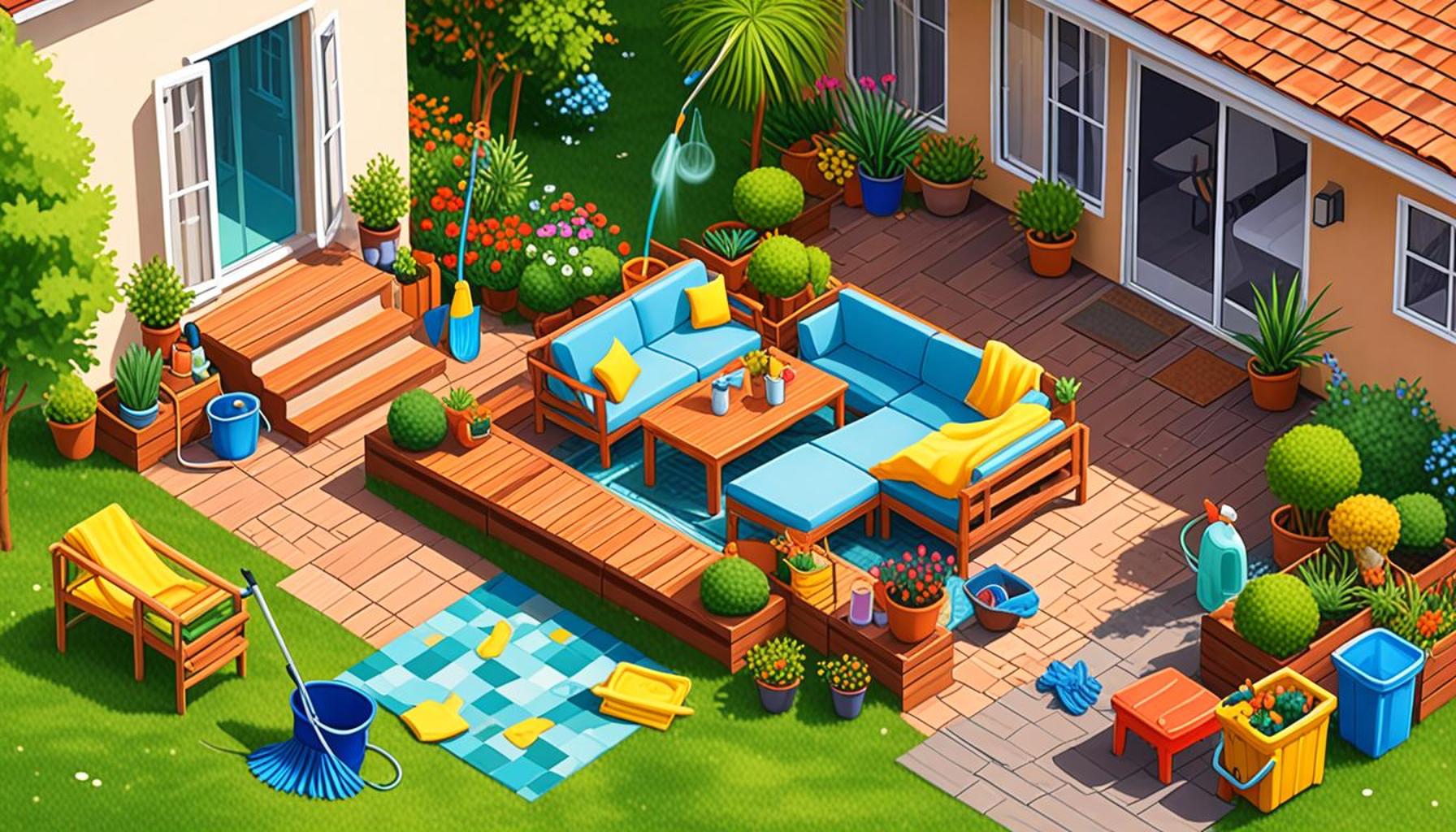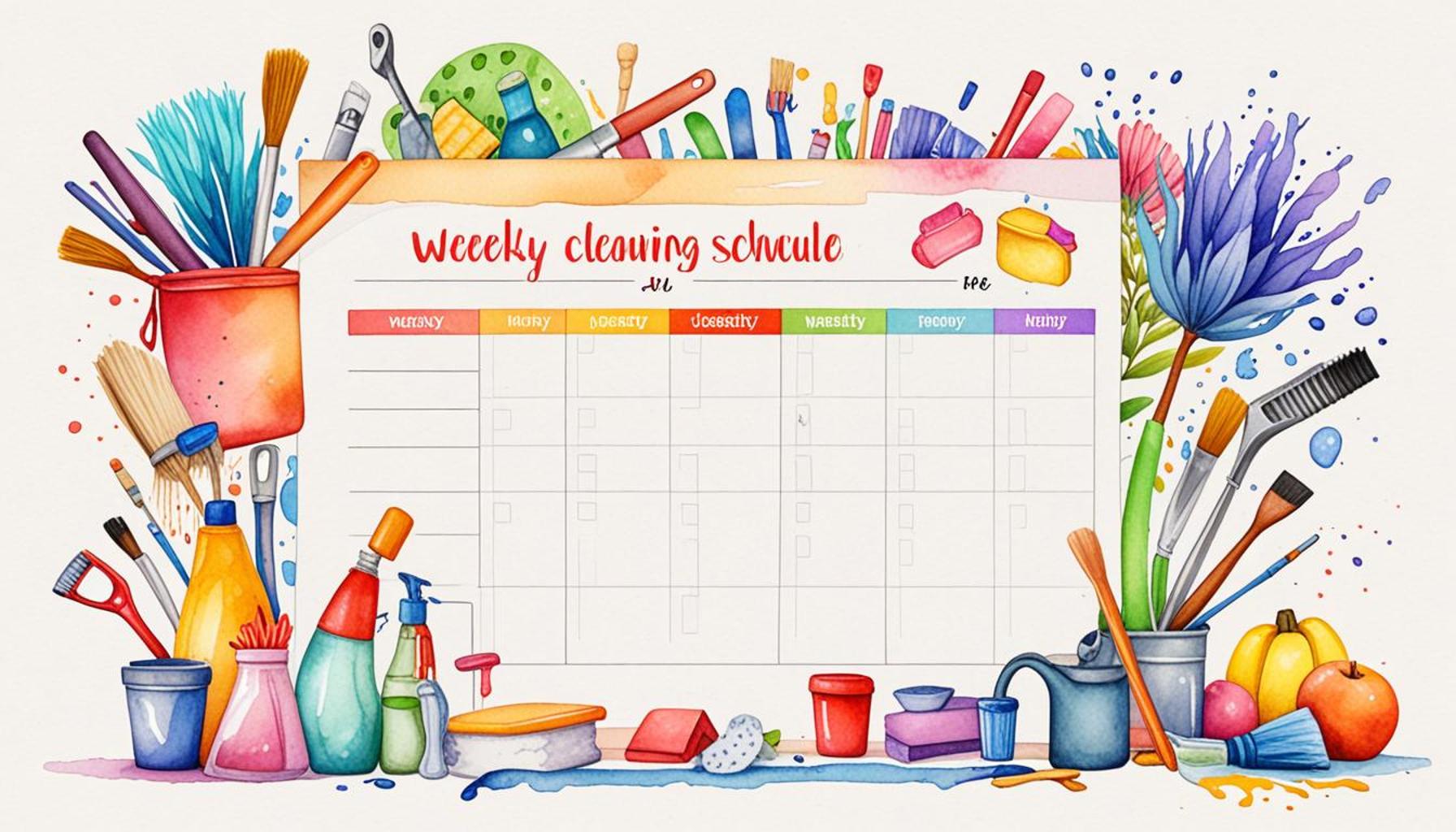How to use gamification to make the execution of the cleaning schedule more fun and motivating

Understanding Gamification in Cleaning
In a world that often prioritizes efficiency over enjoyment, the concept of gamification emerges as a transformative force in our daily routines, particularly in household chores. By redefining the way we approach cleaning, we can shift our mindset from viewing it as a tedious obligation to an exciting challenge. This shift not only makes cleaning less daunting but also infuses it with a level of engagement that can enhance our overall well-being and productivity.
The Power of Game Mechanics
At its core, gamification leverages basic game mechanics such as points, levels, and rewards to motivate individuals to complete tasks. For example, by assigning point values to various cleaning tasks—such as 10 points for dusting the living room, 15 points for vacuuming, and 20 points for deep cleaning the kitchen—you can create a competitive environment, either with yourself or others. This simple modification instills a sense of purpose as you track your progression and set personal or family goals.
Creating a Reward System
The incorporation of a reward system enhances the appeal of this gamified approach. Rewards could range from something small, like a favorite snack or a quick episode of a beloved TV show, to larger incentives, such as a weekend outing once a certain point threshold is reached. By establishing these milestones, household members are more likely to keep on track and hold each other accountable, fostering teamwork and a shared sense of achievement.
Social Engagement and Community Building
Involving family or roommates in your newly gamified cleaning routine can elevate the experience further. Challenge each other to reach higher point totals or set up friendly competitions to see who can clean a given area the fastest. This not only accelerates the cleaning process but also nurtures a sense of community and collaboration within your home. For instance, designate ‘cleaning days,’ where teams face off to tackle different areas, reinforcing bonds while tidying up the space.
Psychological Benefits
Research supports the idea that gamification contributes not only to increased motivation but also to lower stress levels when it comes to completion of household duties. Engaging in tasks that are constructed as games can lead to a more enjoyable and less burdensome experience. Furthermore, the instant feedback of seeing a clean room or a completed task provides psychological satisfaction akin to winning in a game, which can boost your mood and inspire other productive behaviors in your life.

As we continue to explore innovative strategies for gamifying your cleaning schedule, remember that the ultimate goal is to create a habit that turns your home into a clean and organized haven without feeling like a dreaded chore. Get ready to unleash creativity and fun into your cleaning routine, making it not just a necessity, but a rewarding and engaging adventure!
DON’T MISS OUT: Click here to enhance your cleaning routine
Implementing Game Elements into Your Cleaning Routine
Integrating gamification into your cleaning schedule involves a few strategic steps that can amplify motivation and enjoyment. The goal is to approach cleaning not just as a chore, but as a series of challenges that provide satisfaction and a sense of accomplishment. Here are some practical ways to get started:
Define Clear Objectives
Establishing clear and attainable objectives is crucial in a gamified cleaning schedule. Instead of the vague notion of “cleaning the house,” consider breaking down your tasks into specific, manageable objectives. For example:
- Monday: Organize the pantry and discard expired items.
- Tuesday: Dust all surfaces in the living room.
- Wednesday: Laundry day—wash, fold, and put away clothes.
- Thursday: Clean bathrooms—sink, toilet, and tub.
- Friday: Vacuum and mop the entire house.
By having well-defined objectives, you create a roadmap that makes it easier to gauge your progress, akin to advancing through levels in a video game. This sense of direction encourages you to stay engaged and persistent.
Utilize Progress Tracking Tools
Tracking your progress is an essential component of gamification. Consider utilizing progress tracking tools such as charts, mobile applications, or even a simple checklist on your refrigerator door. Here are some methods that may work for you:
- Point System: Assign points to each task and accumulate them throughout the week.
- Visual Progress: Create a chart to visually represent your completed tasks, marking off each one as you finish.
- Leaderboards: If you have household members involved, create a family leaderboard to see who can earn the most points within a designated timeframe.
Using visual aids not only makes the cleaning process more interactive but also cultivates a feeling of competition that can invigorate motivation levels.
Incorporating Challenges and mini-games
To keep things lively, consider introducing challenges or mini-games into your cleaning tasks. For example, set a timer and see how much you can clean within a 15-minute sprint. Alternatively, engage in “cleaning bingo,” where you mark off tasks on a bingo card as you complete them. These mini-games have the dual effect of making cleaning less monotonous while enhancing productivity.
The beauty of gamification lies in its adaptability; tailor these suggestions to fit your household’s unique dynamics and preferences. By layering game-like elements onto your cleaning schedule, you can turn mundane tasks into exhilarating quests. Keep in mind, the ultimate goal is to foster a more enjoyable cleaning experience that sticks, allowing your home to flourish in a clean and organized manner, off the back of your newfound motivation.
To enhance the effectiveness of your cleaning schedule, integrating gamification can transform mundane tasks into engaging activities. By introducing elements such as challenges, rewards, and friendly competition, you can significantly increase motivation. First, consider implementing a points system where each completed task earns points that can be redeemed for various rewards, such as treats or privileges. This approach not only encourages productivity but also fosters a sense of accomplishment.Moreover, incorporating progress tracking through leaderboards can stimulate a healthy competitive spirit among family members or housemates. Displaying achievements visually creates a sense of community and purpose. For instance, you could designate a weekly “cleaning champion,” who gets to choose family activities for the weekend as a reward for their efforts. Narratives can also play a crucial role in gamifying the cleaning experience. Develop a fun storyline where each cleaning activity is tied to a mission. For instance, “defeating the dust monsters” can make the task of dusting much more appealing. This imaginative context can be particularly effective for younger household members, as they are naturally inclined towards storytelling and adventure.Furthermore, technology can aid in gamification, with various apps designed to create engaging cleaning challenges. These tools not only make cleaning enjoyable but also promote consistency in maintaining a clean and tidy home environment. Utilizing reminders, tasks, and progress goals through an app can help track accomplishments and maintain enthusiasm over time.By creatively incorporating these gamification strategies into your cleaning routine, you foster a positive atmosphere while ensuring that tasks are completed efficiently. It turns routine chores into a game, igniting motivation and engagement across the household, ensuring a clean space becomes a shared goal rather than a solitary task. For more insights on implementing gamification, staying organized, and creating a fulfilling cleaning schedule, check out the following table that outlines effective strategies.
| Gamification Element | Advantages |
|---|---|
| Points and Rewards System | Enhances motivation by providing tangible rewards for completed tasks. |
| Leaderboards | Promotes friendly competition, making cleaning a group effort that strengthens bonds. |
| Storytelling | Engages younger participants and makes the cleaning process imaginative and fun. |
| Mobile Apps | Allows for progress tracking, reminders, and interactive challenges to maintain interest. |
DON’T MISS OUT: Click here to discover seasonal cleaning tips
Engaging the Whole Family in the Cleaning Game
When incorporating gamification into your cleaning routine, it’s beneficial to involve the entire household. Engaging your family not only makes cleaning more collaborative but also fosters a sense of teamwork. By introducing inclusive game mechanics, everyone can contribute and enjoy the process together.
Team-Based Challenges
Create team-based challenges that pit family members against each other in friendly competition. For instance, you can assign different cleaning areas to teams and set a timer to see which group can complete their tasks first. This not only encourages efficiency but also builds camaraderie and community spirit within your home. Consider employing a reward system, such as a fun treat for the winning team, to increase enthusiasm.
- Weekly Challenges: Rotate teams each week and introduce new challenges to maintain excitement.
- Theme Days: Designate days with specific themes, like “Tidy-Up Tuesday” or “Fantastic Floor Friday,” where teams can come up with creative strategies to tackle their tasks.
These activities turn cleaning into an engaging routine rather than a dreaded chore, making the household a more united space.
Reward Systems and Incentives
Creating a reward system can be a game-changer in gamifying your cleaning routine. Consider offering both small incentives for daily tasks and larger rewards for achieving long-term goals. For instance, accumulating points from completed cleaning tasks can lead to a fun family outing or a movie night at home. Tailoring the rewards to family interests can significantly boost motivation.
- Point Allocation: Designate points for each completed task, building a score that can be exchanged for rewards.
- Cleaning Credits: Allow kids to earn credits that can be spent on extra screen time or special privileges.
The more desirable the reward, the stronger the motivation to engage in cleaning tasks, which cultivates a sense of responsibility and pride in maintaining a tidy environment.
Incorporating Technology for Extra Fun
In today’s digital age, technology can play a pivotal role in enhancing your cleaning gamification strategy. Many apps and online platforms are designed to simplify task tracking and make it more interactive. For example, apps like OurHome and Todoist include features that allow for point accumulation, customized task assignments, and reward systems. By integrating these tools, you can transform cleaning tasks into a more dynamic experience.
Digital interfaces often appeal to younger generations, making it easier to engage them in the home’s upkeep. This use of technology can help keep everyone informed about what needs to be done, thereby allowing real-time updates and feedback on tasks completed.
Set Time Trials and Record Scores
Add an element of urgency to the cleaning process by setting time trials. Assign a time limit to various tasks—be it ten minutes to clear out a room or fifteen minutes to sort laundry—and keep track of how fast these tasks are completed. This adds an exhilarating race against the clock and encourages family members to push their limits.
To make it a continuous game, keep a scoreboard of top times for each task. Rotate the tasks weekly to prevent monotony and ensure that everyone gets an opportunity to beat their previous scores. This sparks healthy competition and creates an environment filled with excitement and energy as each member strives for improvement.
With these gamification strategies in place, cleaning can transform from a mundane chore into an invigorating and fun activity that everyone in the household looks forward to. Embracing these game-like elements leads to better engagement, superior teamwork, and a cleaner home overall—all driven by the motivation that comes from a well-crafted cleaning game.
DISCOVER MORE: Click here for seasonal cleaning tips
Conclusion
Incorporating gamification into your cleaning routine is an innovative approach that redefines household chores, transforming them from monotonous tasks into an engaging and motivating experience. By fostering a spirit of teamwork through team-based challenges, families can work collaboratively, cultivating an environment where cleaning becomes a shared goal rather than an individual burden. Implementing reward systems not only incentivizes participation but also instills a sense of pride and accountability in maintaining a tidy space.
Moreover, leveraging technology adds a modern twist to this traditional task. Utilizing various apps designed for gamification allows for seamless tracking of tasks, points, and accomplishments, making the cleaning experience more interactive and enjoyable—particularly appealing to younger family members. Setting time trials brings an exhilarating rush that fuels competition, pushing everyone to beat their previous scores, while keeping everyone accountable and on their toes.
As you explore these strategies, remember that the essence of gamifying your cleaning schedule is to create a fun atmosphere, encouraging each family member’s participation. The benefits of turning cleaning into a game go beyond a spotless home; they enhance family bonding, improve teamwork skills, and lead to lasting habits of cleanliness and organization. By embracing these techniques, not only do you achieve a cleaner living environment, but you also cultivate a culture of enthusiasm and cooperation that resonates throughout your home.


